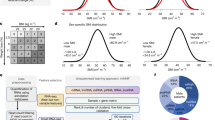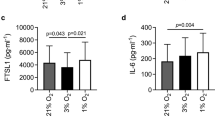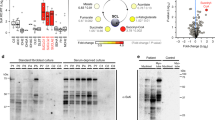Abstract
SUCCINIC acid has long been known to be oxidized rapidly by muscle and many other tissues. Experiments of Szent-Györgyi and co-workers1 suggested that succinic acid and certain other dicarboxylic acids catalyse the aerobic respiration of muscle tissue. Conclusive proof for this catalysis in muscle tissue was given by Stare and Baumann2, and its application to liver and kidney tissue was shown by Stare3.
This is a preview of subscription content, access via your institution
Access options
Subscribe to this journal
Receive 51 print issues and online access
$199.00 per year
only $3.90 per issue
Buy this article
- Purchase on SpringerLink
- Instant access to full article PDF
Prices may be subject to local taxes which are calculated during checkout
Similar content being viewed by others
References
Szent-Györgyi, A., and co-workers, Z. physiol. Chem., 236, 1 (1935).
Stare, F. J., and Baumann, C. A., Proc. Roy. Soc., B, 121, 338 (1936).
Stare, F. J., Biochem. J., 30, 2257 (1936).
Author information
Authors and Affiliations
Rights and permissions
About this article
Cite this article
STARE, F., GORDON, E. & MUSSER, M. Effect of Succinic Acid on the Respiration of Normal Human Muscle and Various Myopathies. Nature 141, 831 (1938). https://doi.org/10.1038/141831a0
Issue date:
DOI: https://doi.org/10.1038/141831a0



